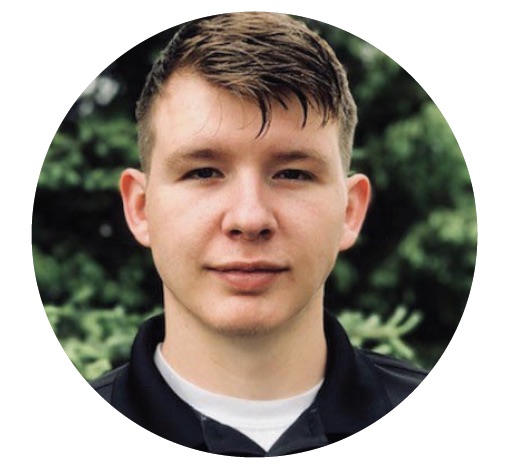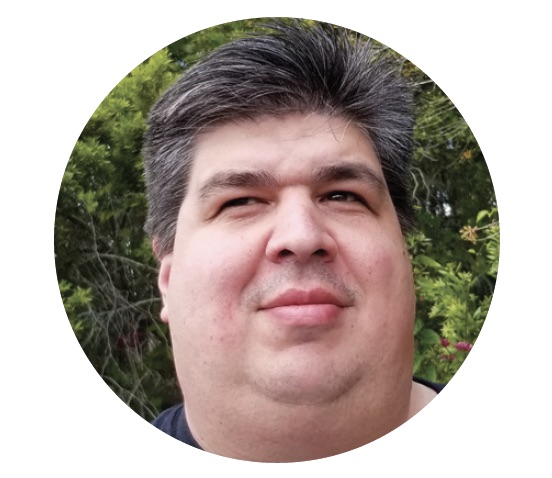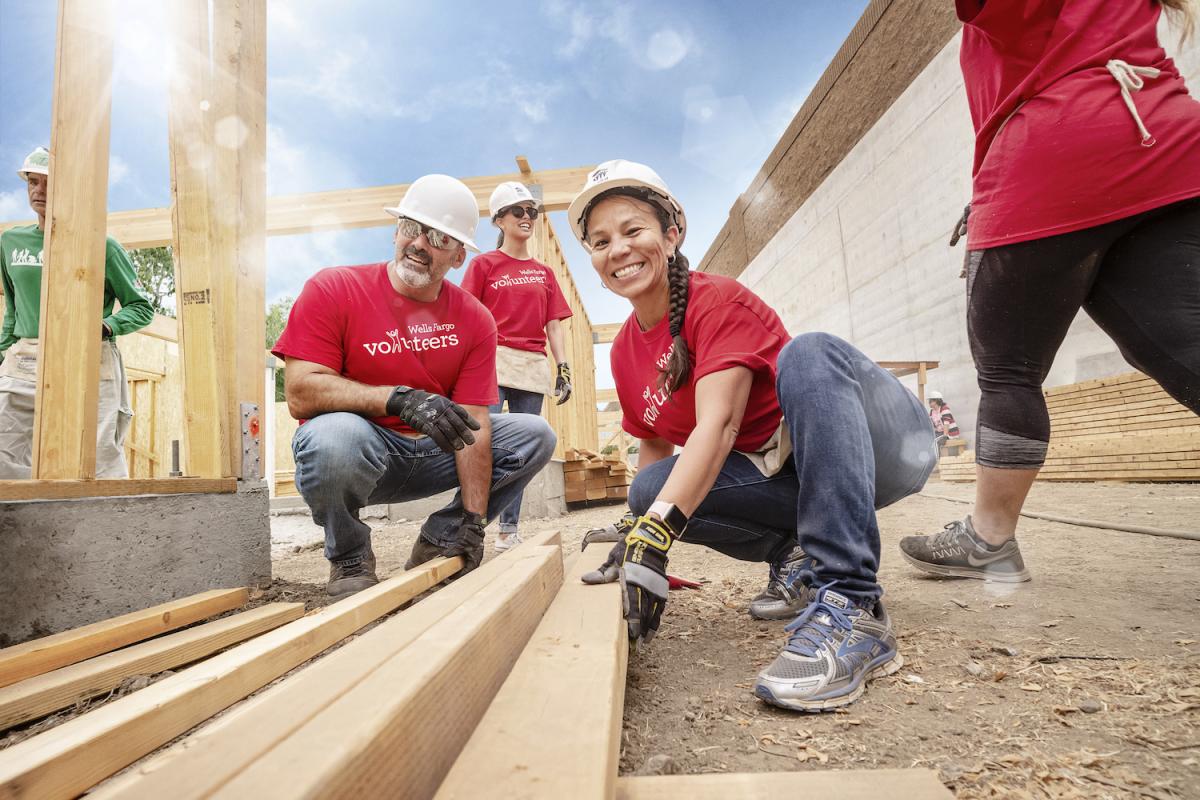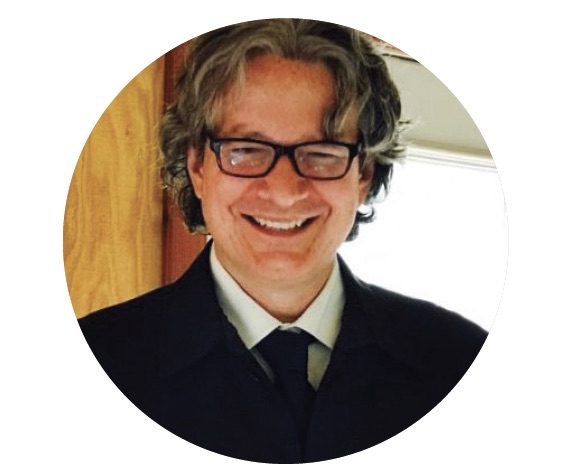All the companies on the Winds of Change Top 50 Workplaces for Indigenous STEM Professionals list are strong supporters of diversity. But what are these workplaces doing that sets them apart? Here, we’ve taken a closer look at three of these employers to highlight some of the ways they foster an inclusive climate at work and the initiatives they have put in place to support individual staff members. To get an even clearer picture of what being part of a diverse workplace can mean to an individual, we asked a Native American STEM professional at each of these organizations to describe his or her experiences.
Procter & Gamble: A force for good; a force for growth
Procter & Gamble — P&G — products have been familiar household helpers for more than 180 years. Today its brands are global, used by nearly 5 billion people worldwide. With operations in 70 countries, P&G is committed to responsible global citizenship and to making gains in sustainability, inclusion, respect for human rights, and collaborative partnerships.
Environmental sustainability is a keystone corporate value and has been for decades as the company works toward its long-term vision and current goals of using responsible ingredients, reducing waste, and achieving a 2030 objective of 100 percent recyclable or reusable packaging, all while reducing its footprint and benefiting smallholders in the supply chain. The company’s efforts have been recognized with multiple global awards for social responsibility and corporate citizenship.
P&G employees know that the company’s commitment to diversity and inclusion makes its trademarked slogan “Everyone valued. Everyone included. Everyone performing at their peak.” a reality in the workplace. Equality goals include achieving 50:50 gender representation companywide. Moreover, for more than four decades a commitment to supplier diversity has promoted working with minority-owned businesses. An active employee affinity group, the Native American Indian Leadership Team encourages Indigenous employees to “bring their whole selves to work” in a way that respects their communities as well as their Native identity. More recent employee benefits include a company commitment to looking beyond “9-to-5” for those who need a flexible schedule. Among other awards for inclusion, P&G has been recognized as one of the Top 50 Companies for Diversity by DiversityInc.
 Colton Harry
Colton Harry
Choctaw
Nation Line Leader/Engineer
Procter & Gamble
According to Colton Harry, nearly everybody in Oklahoma makes a living in the oil industry. “Every man in your family — and some of the women — work in oil and gas,” he says. “My family was, and still is, heavily involved.” For many years he thought that would be his path as well, but in the end, he chose a different career. And he couldn’t be happier.
Growing up on a farm in Weatherford, 60 miles west of Oklahoma City, Harry was surrounded by family: in addition to his parents, three brothers, and three sisters, most of his relatives are within a 20-mile radius.
Secondary education was not a focus in this hardworking family, and neither of Harry’s parents went to college. “I never had any interest in going,” he recalls. But that changed in his senior year of high school. “I will never forget my English teacher walking into class the first day and saying, ‘Everybody in this classroom will go to college.’ I was thinking, ‘Yeah, right.’” Despite being told that most kids at Weatherford don’t go to college, that teacher handed out applications for Southwestern Oklahoma State University. “I applied and got accepted. And once I got in, I figured I’d try it for a year and see what happened,” says Harry.
Even though the university is in his hometown, Harry decided to live off campus. “With six brothers and sisters, I wanted my own space!” he says. “But I wasn’t prepared for how overwhelmed I felt by this change. I was on my own and had to find a job to support myself. And coming from a school where everyone knew everyone, to a university where I was lucky if I knew three people, was very hard.”
Harry also faced challenges finding his place academically, changing his major at least three times. “I stumbled upon engineering entirely by accident,” he recalls. “One day a professor approached me and asked what my major was. I told him (at the time it was history), and he suggested I sit in on his Introduction to Engineering class. I went, loved it, and ended up majoring in industrial engineering.”
When Harry wasn’t in class, he was working in the oil fields. Every Friday he would drive to the job site, then head back to campus early Monday morning. “Managing school and work was very challenging,” he says. “Still, I knew that getting an education would give me a better chance of creating a career doing something I loved.”
But as graduation approached Harry needed to find work, and oil companies are always hiring. He ended up starting at Outlaw Oilfield Supply just six days after he graduated. “After a few months I realized that I didn’t see a long-term fit,” he says. “The oil industry is up and down. I wanted more stability and a chance to use my engineering skills.”
He found both at Procter & Gamble. “I run a line with four crews that produce Bounty paper towels,” he says. “I oversee cost materials, utilization of skills, people who work on the line, and overall production.” For Harry, the job has many pluses. “I like working with my hands and getting up close with my projects,” he explains. “I get such a sense of pride from being able to take raw materials and create a finished product that can help others.”
Still, the transition to a more corporate environment was not easy. “While I love my job now, it was definitely a shock going from the oil industry,” he says. “Policies and procedures are stricter, and P&G has very high expectations. But once I got there, I knew instantly that manufacturing is something I want to do for the rest of my life.”
Another change for Harry was a renewed connection with his heritage. “It wasn’t until I got to P&G, where they excel at recognizing and supporting diversity, that I began to get in touch with my roots,” he says. “Now, I’m not only proud to tell people I am part of the Choctaw Nation, it’s one of the first pieces of information I share about myself.”
After spending two-plus years at P&G, Harry is thinking about more ways he can contribute. “I’d love to become the director of Product Supply one day, but am also considering going back to school for my MBA,” he says. “I want to spend the rest of my career here, and I’ve always had a strong will to be the best at what I do.”
— Alexa Panza
Video Gaming Technologies: We create winners!
A multi-award-winning developer, manufacturer, and distributor of casino games, Video Gaming Technologies (VGT) counts more than 20,000 terminals in 140 casinos in eight states. Founded in 1991, VGT became active in tribal gaming in 2001 and doubled its size seven times by 2014. Because VGT offers a full range of services to its customers — superior game design, precision manufacturing, and outstanding customer support — it has become one of the most trusted gaming partners in the industry, serving the emerging and Class II tribal gaming markets. VGT is focused on building its success in tribal gaming by partnering with its customers. The company values a shared cultural perspective as well as a commitment to a quality entertainment experience and responsible gaming.
Headquartered in Tennessee, VGT has a manufacturing facility in Oklahoma and design studios throughout the country. Among VGT’s more than 600 employees are STEM professionals in game design, software development, and hardware engineering. Together, they are continually innovating exciting new products for casino players. In 2014 the company became a division of Aristocrat Leisure, a leading provider of land-based and online gaming solutions.
 Mike Schreiber
Mike Schreiber
Software Engineer IV
Video Gaming Technologies
Mike Schreiber was five when his family moved from Sacramento, Calif., to a small town in the state’s Sierra Nevada mountain range, where his parents owned a grocery store. The town’s population was just 300, and friends were scarce. Outside of his three brothers, his only company was the family’s Commodore 64 computer.
By the time he was around eight, Schreiber had become infatuated and had figured out how to write programs. His family played Dungeons and Dragons, and he wrote a program to calculate the roll of dice for each player. Sure, he says, it would be easier to just roll the dice, but he had more fun writing the program. As he looks back, he realizes it was good experience and planted a seed for his future career.
Growing up in such a small town had other drawbacks, besides the lack of friends. School was easy for Schreiber — he never bothered to study much and still graduated as the class salutatorian. He enrolled at the University of California, Davis, and found that college was a different story. “It was tough,” he says. “I flunked out my first year. They said come back when you’re more mature.”
Schreiber took off a year to reset and recommit to getting a college degree. Then it took him five more years to graduate, earning his degree in computer engineering. He credits his mom for encouraging him to persevere. Besides, he says, “It was something I really wanted to do.” In addition to the influence of that family computer, he had also taken a summer course in general engineering in his eighth-grade year. He realizes now what an impact that one course made. “I pretty much decided that’s what I wanted to do when I grew up,” he says.
And he has been doing just that since 2009 as a software engineer at Video Gaming Technologies in Franklin, Tenn. “We work on slot machines,” he explains. “We don’t do games.” A main focus for Schreiber is the accuracy of the money accepters. “We worry about what happens when the power goes off and you lose the internet connection — the game has to come back with the right amount of money in it.”
Schreiber rattles off a list of factors he considers as he writes programs to ensure that the machines work properly because an accurate count of money in each machine is required at all times: “any buttons on top that light up, the switches that light up when you open the door, the meters that count the money when you play.”
His job also supports the ability of the company to respond to consumer preferences. “Managers need statistics,” he says. “One game is very popular; the other one isn’t.” He can tell them what games to switch out.
Schreiber says the most satisfying part of his job is when things click. “Most of the time when you’re programming, it’s like solving a puzzle,” he explains. “When you’re doing it, it can be very frustrating. But when you finish it, it’s very satisfying. It’s good to have small victories that lead up to a large victory.”
Among other satisfactions Schreiber cites about his job are the health care benefits plus a 401(k) program. But his favorite benefit just might be the free lunch. At his previous job he didn’t take time to go out to grab lunch, so he often felt hungry in the afternoon while trying to work. Now he walks to the cafeteria and selects his free lunch from meals delivered by three different restaurants. “I take my lunch back to my desk and keep working,” he admits.
Schreiber laughs when asked about players who bang on a machine for good luck. “That’s OK, our machines are designed to be sturdy,” he says. “But there’s no luck involved — it’s all random.”
What does he want to be doing 10 years from now? “I want to be a more senior programmer,” he says, and continue to solve those programming puzzles. Schreiber’s also learning that computers aren’t always the best way to do things. “I started playing piano in kindergarten,” he explains. And then he wrote a program to play the music for him, reasoning that “If the computer can do it perfectly, why am I playing?” He laughs at the memory. “As I grew older, I realized flubbing up can be a good thing.”
— Patty Talahongva
Wells Fargo: Seeing differences as an asset
 Today Wells Fargo is well-known as a major global banking enterprise, so it may seem incongruous that its widely recognized symbol is a six-horse stagecoach. But that iconic image reaches back to the beginnings of the company, when along with banking services it was a player in transcontinental transportation. Founded in 1852, Wells Fargo began offering financial and express delivery services, establishing an “ocean-to-ocean” network of agents. By 1918 the federal government had taken over transportation networks as part of the war effort, leaving Wells Fargo with one commercial bank in San Francisco. The company grew that presence throughout the 20th century, innovating banking products and expanding services. By the 1990s, Wells Fargo was back to its original transcontinental territory, and in the 21st century, it is delivering diversified financial services to individuals and business customers across the world.
Today Wells Fargo is well-known as a major global banking enterprise, so it may seem incongruous that its widely recognized symbol is a six-horse stagecoach. But that iconic image reaches back to the beginnings of the company, when along with banking services it was a player in transcontinental transportation. Founded in 1852, Wells Fargo began offering financial and express delivery services, establishing an “ocean-to-ocean” network of agents. By 1918 the federal government had taken over transportation networks as part of the war effort, leaving Wells Fargo with one commercial bank in San Francisco. The company grew that presence throughout the 20th century, innovating banking products and expanding services. By the 1990s, Wells Fargo was back to its original transcontinental territory, and in the 21st century, it is delivering diversified financial services to individuals and business customers across the world.
As a global company, Wells Fargo understands the value of a workforce that can anticipate — and meet — the needs of its diverse customer base. Globally, 56 percent of Wells Fargo’s nearly 270,000 employees are women, and in the U.S., 42 percent are racially or ethnically diverse.
The bank is also committed to environmental sustainability as part of its wider mission of social responsibility, doing its part by increasing operational efficiency and promoting clean technology and other environmental solutions. Philanthropy and volunteerism are corporate values — the company gave away $440 million in 2018. Wells Fargo employees donated another $78 million plus countless volunteer hours, demonstrating that this is a place where skilled people can do more than grow a career — they can help grow stronger, more resilient communities.
 John Gage Hutchens
John Gage Hutchens
Cherokee
Systems Support Consultant, Enterprise Information Technology
Wells Fargo
Today Gage Hutchens is a senior technology consultant at Wells Fargo with over 22 years of IT experience. But as a college student, he didn’t see himself in a tech career, even though computers were a hobby for Hutchens from his early teens. “It never occurred to me to study computers and programming as a discipline,” says the Las Vegas native. “Back when I was younger, computer nerds wore pocket protectors, worked in cold basements, and didn’t date girls. That last part seemed a show-stopper at the time.”
Instead Hutchens, Cherokee, majored in economics and history at the University of Southern California and went on to earn a master’s degree in clinical psychology from Antioch University and an MBA from Western Governors University. What steered his course to Wells Fargo was the 15 years he spent as an entrepreneur, running what he describes as a boutique technology consulting business in San Francisco. His largest client was Wells Fargo, and he was the solution architect.
In 2015 he joined the company as a systems architect, working as part of a diverse team of about 60 application support engineers. “My role is to head up our strategic view, lead our process mapping and workflow, and validate the detailed documentation being generated and updated,” he explains. “I also co-lead a virtual automation team of about a dozen people where I provide the networking and other soft skills to balance my co-lead’s hard programming skills.”
Hutchens has found a lot to like about his new roles. “I enjoy tackling the unknown and leveraging technology to bring order to business processes,” he says. “And I love new challenges. Our new enterprise team is an amalgamation, bringing together six teams and unifying them into a new structure with an enterprise focus. It has proven to be a fun challenge.”
Besides a good place to grow a STEM career, Hutchens has found an exceptionally welcoming place for Indigenous employees. He is so enthusiastic about Wells Fargo’s support of its diverse workforce that he has stepped up to lead the Native Team Member Network. “We have a terrific TMN, with a virtual chapter and chapters in nine states,” he says. “We hold local events, sponsor all sorts of activities, support local Native communities, and advocate for Indian Country as a whole. We are currently leading a recommendation initiative requested by executive leadership to improve leadership opportunities for, and recruitment and retention of, Native people.”
Beyond fostering the Native TMN, Wells Fargo is extending significant support to Indian Country. “Wells Fargo has committed to providing $50 million over the next four years to nonprofits like AISES that serve Indian Country,” says Hutchens.
For Hutchens and many others who work at Wells Fargo, co-workers are one of the biggest attractions. “The people are why I loved working with Wells Fargo as a vendor and why I didn’t interview anywhere else,” he says. “Our new CEO is terrific and dedicated to transparency and doing the right thing for our customers, and that makes for a healthy work environment.”
That environment is reflected in the workplace culture and values, which sits well with Hutchens. “Our ‘One Wells Fargo’ approach ensures that we all work together in harmony to best meet our stakeholder needs,” he explains. “This ‘pulling together for a common cause’ sounds like an Indigenous value to me.”














